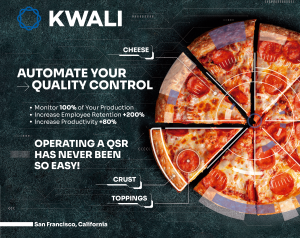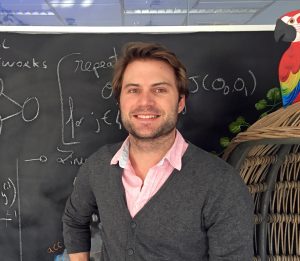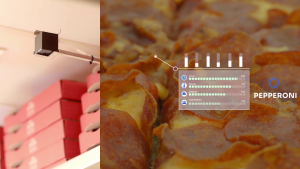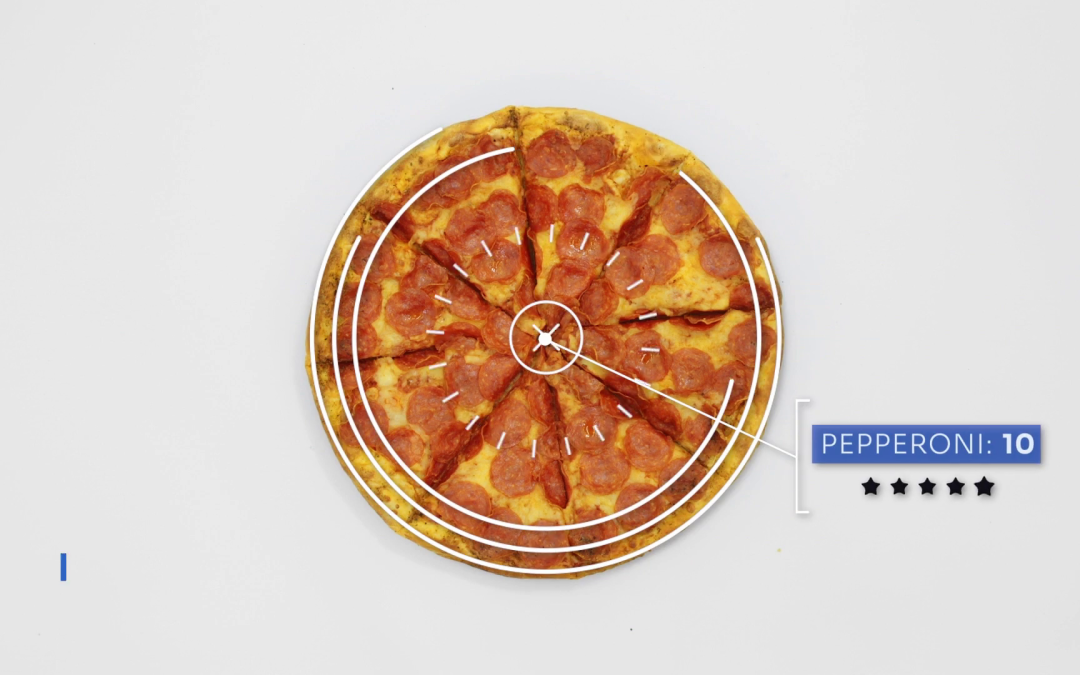Computer vision is behind many of the biggest technological leaps in recent memory, from pedestrian-detecting cars to cancer-spotting MRI scans, and its next feat is improving the quality of your pizza.
With a simple camera backed by wildly complex software, Kwali has created an omniscient eye that assesses the finer points of pizza production including the shape and quantity of ingredients, while simultaneously rating the kitchen staff who are assembling them.
 Pizza is easy pickings for smart kitchen cameras, especially compared to cuisines like burgers or Indian food where it’s difficult to judge production metrics from a top-down vantage point. In the always burgeoning pizza category, however, it’s comparatively easy to tell if a pizza was made to spec.
Pizza is easy pickings for smart kitchen cameras, especially compared to cuisines like burgers or Indian food where it’s difficult to judge production metrics from a top-down vantage point. In the always burgeoning pizza category, however, it’s comparatively easy to tell if a pizza was made to spec.
It’s not just product quality and staff accuracy that are in view, however, as Kwali’s computer vision data can be used to gauge production times, as well, which can also be used to improve the efficiency between pizzerias and third-party delivery providers like DoorDash and Uber Eats.
The camera itself is a relatively small, simple device that can be fully set up in approximately 25 minutes, but Kwali CEO Emmanuel Massenez said the secret sauce is in the software—and what his team can extrapolate from the limited data it provides.

Kwali CEO Emmanuel Massenez
“What we have achieved is fairly difficult,” Massenez said. “This is one of the reasons why we don’t really have competition, and the initiatives that were done in-house by large pizza companies were not really successful.”
That tough-to-crack knowledge includes not just the tech, but also the faultless timing and accuracy required to evaluate food production from static images. In addition, and quite critically according to the CEO, Kwali’s product also needed a price point that wouldn’t scare off typically strapped restaurant operators.
“It has to be restaurant affordable so the unit economics must make sense,” he added. “We’re currently at $149 per month per store pricing and, as you can imagine, this is OK for a restaurant but you can’t go more expensive than this.”
While the company is based in San Francisco, much of its staff—including co-founder Juan Pablo Morales—is Latino with ties to Chile. Before starting Kwali, Massenez and Pablo Morales founded Arara, a Wi-Fi analytics provider focused on retail, fast food, health and education that’s based in the capital city of Santiago.
Vision as margin preservation
At present, more than 250 restaurants are using Kwali’s pizza eye tech, and the company is especially focused on quick-service pizza brands—and their franchisees franchises—since standardized operations are an inherent fit for the technology.
 “If we fine-tune our algorithms and our technology for one big brand, all the franchisees become people we can address very quickly, because they share the same menu, the same layout and the same kitchens,” Massenez said. “Pizza is fairly easy—it’s a flat food item, so in terms of vision, you can pretty much understand everything about the pizza.”
“If we fine-tune our algorithms and our technology for one big brand, all the franchisees become people we can address very quickly, because they share the same menu, the same layout and the same kitchens,” Massenez said. “Pizza is fairly easy—it’s a flat food item, so in terms of vision, you can pretty much understand everything about the pizza.”
The company claims it can reduce food costs while increasing employee retention and productivity. Some of those potential gains, however, come with the assumption that operators incentivize positive performance, rather than focusing on punishing performance that doesn’t meet brand standards. Its CEO stressed that he believes most mistakes aren’t committed intentionally, which is the company’s official stance for the performance monitoring side of the business.
 Kwali allows multi-store owners to reward exceptional employees, retrain those who need a course correction, maintain strict portion control standards and compare one location with another.
Kwali allows multi-store owners to reward exceptional employees, retrain those who need a course correction, maintain strict portion control standards and compare one location with another.
“This is the first time that it’s not a he said/she said; it’s not a gut feeling anymore, it’s performance, who actually makes the best pizza?” Massenez said, adding that the camera’s data also provides detailed production times that can be fed to delivery networks to improve delivery efficiency across the board.
He explained that, with pizza orders often arriving in batches that create production bottlenecks, compiling time stamps for each individual pie means that management could start a short-term promotion when production teams are moving quickly or, conversely, pull a limited-time offer if a kitchen is slowing down for any reason.
Sharing those timestamps with third-party delivery providers means drivers can spend less time waiting, and show up at the restaurant only when the pizza is actually finished, boxed and ready for transport.
Massenez is open about the technology’s challenges with other cuisine types, but stressed that pizza is such a large category that his “very lean and prudent” crew has plenty of white space as it scales up in the coming years.
Concepts like Subway, where the food item is prepared in front of the customer, present additional opportunities where a camera could be mounted on the prep table.
“We go back to the portion control issue, which I think is a very relevant issue because it’s constant,” Massenez added. “Whenever you produce something, you want to be aware if they’re following the recipe or not, because it’s your recipe, it’s your margin.”
Looking further ahead, Kwali aims to become the primary computer vision company for food at large, encompassing everything “from water and agriculture to service and last-mile delivery.” Because AI doesn’t like diversity, however, the team remains focused on pizza brands in the near term, while expanding what the product is able to achieve beyond just monitoring food quality and adherence to recipes.


